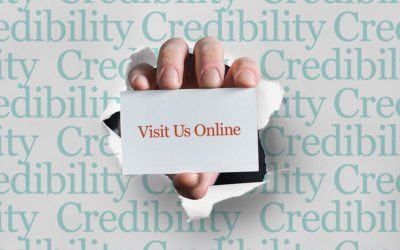Does the name of your business or organization mean anything to people other than you? Do you find yourself clarifying it or explaining why you chose it? The latter is not necessarily a bad thing, because it starts a conversation. However, it could indicate a missed opportunity to put a clear stake in the ground that means something to your prospects while reinforcing your Brand Promise.
People have often asked me, “Why Step 2?” It’s a fair question and, in our case, an opportunity to explain that, “Step 1 is the idea and Step 2 is how to present it.” Our primary message is that it’s never too early to begin thinking about branding, identity, and marketing. People immediately get it.
On the other hand, I know a business owner who is continually explaining to people what their business is not. Their name confuses their market into thinking they offer a different service. Sure, they can clarify it with a tagline, but you don’t always get that chance before losing your audience. In our case, if our business name didn’t include “Branding and Design,” we’d be facing the same challenge. In fact, we recently added the “and Design” part because we fell into the same trap of assuming people knew that we did more than just branding. You see, nobody is immune to this.
Then there’s the name that resembles a common word but is spelled differently. Usually, that name is chosen because the properly spelled one is already taken, the URL is unavailable, or someone simply wasn’t considering the ramifications. People are always misspelling it and forcing the company reps to clarify it, which can be very frustrating. It certainly doesn’t help when people are trying to find them online.
Another scenario is the name that’s a combination of other words or totally fictitious. At first, it means nothing, but offers a clean slate on which to build a messaging strategy. The organization can define it any way they choose. However, this approach typically requires significant time and awareness building efforts ($$) to really call it their own.
If your business is like ours, you don’t have a bottomless marketing budget to build awareness of a name that lacks clarity. We have to be more calculated and deliberate. So, having the right name out of the gate is vital to laying that first foundational block of your brand identity. This is no easy task. In fact, it’s the most challenging service we offer. (In a related post HERE, we outline three major hurdles of business naming.)
Think Long-term
Whatever approach you take, be sure to consider where your business will be years from now. Your name should stand the test of time and be high-level enough so that it provides flexibility to make strategic adjustments without it being compromised. Ideally, you’ll choose a name that is meaningful to your audience and reinforces your Brand Promise. Making sure it sends the right message to the right audience (remember, it’s about them, too, not just you) is vital, because it’s often their first impression. And, understanding that your wider audience extends beyond your immediate prospects (potential investors, industry influencers, local media, career-seekers) will help you build brand equity across a broader landscape.
So, what’s in a name, anyway? A Brand Promise. A marketing strategy with purpose. Originality. A meaningful takeaway. Clarity. Built-in longevity. Room to grow. And a lot of time and research. Our number 1 rule in naming is, “If it comes easily, it’s already taken.”
Brand vs. Brand Identity
Don’t confuse your brand identity with your brand. Your logo or name are not your brand. They are part of your brand identity. Your brand is your promise and what people think of when they hear your name. Consider Harley-Davidson and the lifestyle it promotes. Look at Nike’s “Just Do It.” and the way it challenges the audience. These examples both transcend the products to create a frame of mind that only they can own. If your brand is your promise to your market, brand equity (whether positive or negative) is based on your ability to deliver on it and the brand loyalty it generates. (See our infographic: Seven Stages of Achieving Brand Loyalty.)
Successful brand building makes customers willing to pay a premium for it. Think of Apple and the expectation of reliability, elegance, innovation, and a great user experience. That’s a tall promise to fulfill, but they do it well enough to overcome the inevitable bumps in the road. And there are always unforeseen setbacks and challenges.
Building brand equity requires regular upkeep through introspection, communicating regularly with your customers, evaluating your competitors, and gauging market trends.
Related Posts
Are you trapped in a marketing bubble?
We often get too close to our business to see it the way others do. We build a virtual bubble around ourselves and lose the perspective needed to make sound strategic decisions.
Your credibility is on(the)line
When you meet new prospects, network or attend industry events, the moment you share your contact info, your credibility will be on the line. If you’ve taken a long time to build a first-rate reputation, don’t let a second-rate website undo it.
Another do-it-yourselfer just got burned
You cannot do it all and do it all well. Nobody can. I certainly can’t. Instead, I’m spending my time doing what I do best to grow my business, make money, and hire seasoned professionals to help with the rest.
Why aren’t you?
The tagline: Your stake in the ground
The tagline is not about who you are or what you sell. It’s about them: your target audience. So, you better make sure it’s concise, direct and memorable, so they recall it the each time they hear your name.
8 more ways you could be losing customers before you get them (part 2)
Here is our second installment of tips addressing ways you could be missing business opportunities without even realizing it.
8 ways you could be losing customers before you get them (part 1)
Instead of offering tips to get more clients, we’re putting a bit of a twist on things by highlighting ways you could be losing them without even realizing it.







